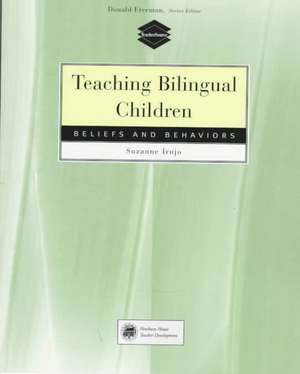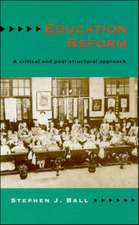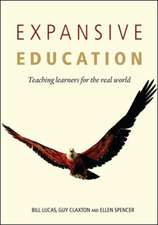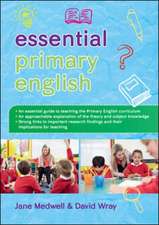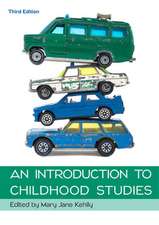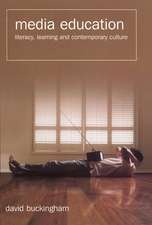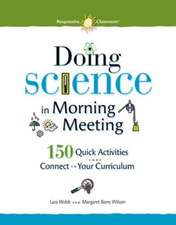Teaching Bilingual Children: Beliefs and Behaviors: TeacherSource Series
Autor Suzanne Irujo, Irujoen Limba Engleză Paperback – 31 aug 1997
Preț: 359.57 lei
Nou
Puncte Express: 539
Preț estimativ în valută:
68.81€ • 70.47$ • 57.24£
68.81€ • 70.47$ • 57.24£
Carte tipărită la comandă
Livrare economică 18 martie-01 aprilie
Preluare comenzi: 021 569.72.76
Specificații
ISBN-13: 9780838460986
ISBN-10: 0838460984
Pagini: 134
Dimensiuni: 188 x 235 x 6 mm
Greutate: 0.19 kg
Ediția:1999.
Editura: HEINLE ELT
Seriile TeacherSource Series, Teachersource
Locul publicării:United States
ISBN-10: 0838460984
Pagini: 134
Dimensiuni: 188 x 235 x 6 mm
Greutate: 0.19 kg
Ediția:1999.
Editura: HEINLE ELT
Seriile TeacherSource Series, Teachersource
Locul publicării:United States
Cuprins
1. Bilingual children learn in the same ways as other children 2. Children learn when they are doing something that has an authentic purpose 3. Children learn by doing 4. Children learn when their teachers believe in them, in themselves, and in what they are doing 5. Children learn when they are involved in determining what and how they will learn 6. Children learn when they have control over the technology used to help them learn 7. The amount of use of each language, and the ways in which each is used, should be consciously determined 8. Children must be assessed in ways that reflect natural language use and the ways in which they learn 9. Culture is an integral part of the curriculum and of classroom organization
Recenzii
1. Bilingual children learn in the same ways as other children 2. Children learn when they are doing something that has an authentic purpose 3. Children learn by doing 4. Children learn when their teachers believe in them, in themselves, and in what they are doing 5. Children learn when they are involved in determining what and how they will learn 6. Children learn when they have control over the technology used to help them learn 7. The amount of use of each language, and the ways in which each is used, should be consciously determined 8. Children must be assessed in ways that reflect natural language use and the ways in which they learn 9. Culture is an integral part of the curriculum and of classroom organization
